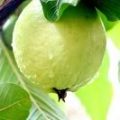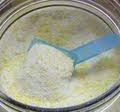Herbal soap is a kind of soap mixed with natural ingredients, juice or extract and vitamins from medicinal plants, fruits and vegetables. If you’re looking for all-natural herbal soap, try making these homemade herbal soaps using akapulko, guava, papaya, calamansi, cucumber, radish, and other medicinal plants. You already have most of the ingredients in your kitchen or garden. Herbal soaps contain many of the nutrients and essential oils our skin and body needs to nourish and help strengthen the skin’s natural defenses. Making your own herbal soaps can also be a profitable business idea. Below are some herbal soap recipes:
How to make Herbal Soap:
Utensils:
* Plastic pail
* Wooden ladle or bamboo stick
* Glass or cup
* Mortar and pestle
* Cheese cloth or strainer
* Knife
* Chopping board
* Cooking pot (preferably made of clay, enamel, stainless or glass)
* Stove
* Plastic molders
Akapulko and Guava Herbal Soap
How to Prepare a Decoction:
1. Wash the leaves thoroughly and chop or cut in small pieces.
2. Measure 1 glass of chopped fresh leaves and 2 glasses of water.
3. Let it boil for 15 minutes (start timing when the water starts to boil).
4. After 15 minutes, remove from fire and strain in a cheesecloth. Set aside and let it cool.
Materials:
* 1 glass Caustic Soda (NaOH)
* 3 glasses Akapulko or Guava decoction, cooled
* 5 glasses cooking oil
* coloring powder (optional)
Procedure:
1. Prepare the materials and the utensils needed.
2. Measure 1 glass of caustic soda and 3 glasses of Akapulko or Guava decoction and pour into a plastic pail.
3. Mix well by stirring continuously using a wooden ladle or bamboo stick. Use only one direction in mixing the mixture. Stir until the caustic soda is dissolved.
4. Pour 5 glasses cooking oil into the mixture.
5. Continue stirring until a consistency of a condensed milk is achieved.
6. Pour the soap mixture into desired plastic molders. Set aside and let it cool to harden.
7. After 4-5 hours, remove the soap from the molder.
8. Allow 30 days of ageing before packing. Label the soaps.
Indications:
* Akapulko leaves – anti-fungal
* Guava leaves – antiseptic for wounds
Kamias, Calamansi, Papaya, Cucumber and Radish Herbal Soaps
Materials:
* 1 glass Caustic Soda (NaOH)
* 3 glasses water
* 5 glasses cooking oil
* 1/2 glass juice or extract
Procedure:
1. Prepare the materials and the utensils needed.
2. Measure 1 glass of caustic soda and 3 glasses of water and pour into a plastic pail.
3. Mix well by stirring continuously using a wooden ladle or bamboo stick. Use only one direction in mixing the mixture. Stir until the caustic soda is dissolved.
4. Pour 5 glasses cooking oil into the mixture.
5. Continue stirring until a consistency of a condensed milk is achieved and add 1/2 glass of juice or extract.
6. Pour the soap mixture into desired plastic molders. Set aside and let it cool to harden.
7. After 4-5 hours, remove the soap from the molder.
8. Allow 30 days of ageing before packing. Label the soaps.
Indications:
* Kamias – fruit extract or juice (bleaching soap)
* Calamansi – fruit extract or juice (bleaching soap)
* Cucumber – fruit extract or juice (moisturizer)
* Papaya – extract from fresh leaves (bleaching/moisturizer)
* Radish – extract from the stem (moisturizer)
Reminder:
* Caustic Soda can harm the skin upon contact. Wash immediately with vinegar or anything sour and then wash it with soap and water.
* Caustic Soda is harmful to health and so, make the necessary precaution. Use mask and gloves to protect your body.
Carrot Castile Herbal Soap
The Beta Carotene in carrots makes it very good for your skin, the lather is lovely and creamy, and the orange colour of the soap itself is beautiful.
Ingredients:
1 cup carrot juice;
5 tablespoons lye;
2 cups olive oil 1/2 cup canola oil;
(optional) tiny dried dice of carrot. Cut it as small as possible. When dry it should be like sand grains. Ann Beck’s Castile Carrot Soap
NOTES:
It’s very important to use rubber gloves and eye protection when using lye. One can hand mix the soap, but it’s far simpler to use a food processor. The word “trace” means if you drip some soap from a spoon onto the surface of the batch, it leaves a faint mark. Tracing is less critical if the soap is made in the processor. With processor soap, the batch should be the consistency of whipping cream.
Hand mixed soap can separate and take up to two hours or even more of stirring to achieve trace. Soap must be poured as soon as it has traced. it sets up very quickly.
Never use aluminum utensils or molds. Lye reacts badly with it. stainless steel is fine, as is plastic. Take care not to allow lye grains to touch Formica countertops (worktops). It will discolor it. It’s best to measure the lye with the container in the sink.
Method:
1.) measure the carrot juice and place it into a Pyrex cup, of at least two cups capacity. Place the cup into a sink.
2.) mix the two oils together and barely heat them to 110 degrees F.
3.) Carefully measure the lye and set aside in a glass.
4.) Pour the lye into the carrot juice and stir with a wooden utensil, like a chopstick or a bamboo skewer, until the lye dissolves. THE liquid/lye combination will have a chemical reaction and will heat up to about 180 degrees F. EVENTUALLY the juice/lye combination needs to cool to 110 degrees F, which is just barely discernible to your wrist. YOU can use a thermometer, of course.
5.) when the oil and the lye mixture are both at about 110, pour the oils into the food processor and add the lye mixture. Process until trace has occurred.
6.) have your molds arranged on a newspaper covered cookie sheet. Pour the soap into the molds. Cover the molds with lids or with plastic wrap, taking care not to have the lids or wrap touch the soap.
7.) Put the soap batch in a draftless spot and cover it with a towel to protect the heat that will occur as the saponification process (the chemical change that creates soap) proceeds. Allow the batch to remain covered until it has cooled, usually overnight.
At this point, you’ll do your clean up. always protect your eyes and hands during this phase. it’s best to wash everything in the sink and again in the dishwasher. raw soap would take the hide off of a rhinoceros.
8.) Uncover the soap, remove the plastic or the lids, and allow the soap to remain in the molds for (about) 2 days, or until it looks like it is pulling away from the sides of the molds.
9.) unmold the soap, lay it on pencils or chopsticks so that the air can circulate around it. It must cure for a month before use.
Twenty-Two Carrot Soap
Ingredients:
4 cups carrot juice distilled water;
5 tablespoons lye;
1 1 /4 pounds lard (or 2 cups olive oil, plus 1 /2. cup canola oil)
1.) Place the carrot juice into a large saucepan and bring to a boil. Using a coffee filter, strain the liquid away from the bright orange “foam”. Reserve the foam and add it to distilled water to make one cup of liquid.
2.) Follow the rest of the instructions in the above Castile recipe.
Sources: doh.gov.ph, carrotmuseum.co.uk







Permission to post admin. This is Jennifer Estil from Gabi's Handcrafted Soap, We are making Natural/Herbal Soap like Calamansi Milk Soap, Papaya Milk Soap, Honey Oatmeal Soap, Kojic+Orange Peel Soap, Tawas Soap and etc. We are ope for wholesale and retail. We also give discount for bulk order like half of the price of our retail depending how much soap you order. For more detail please call/txt to 09295625302 or follow us on facebook: gbs handcrafted soap or email us to gabi.handcraftedsoap@yahoo.com. We also customize soap. Thank you
HELLO EVERYONE
After trying various diets and fail, I finally managed to slim down.
I lost a lot of belly and lost weight 24 pounds with the diet I found this site here http://5fastweightloss.xyz
We must never give up our goals. A big kiss to all
Very interesting.